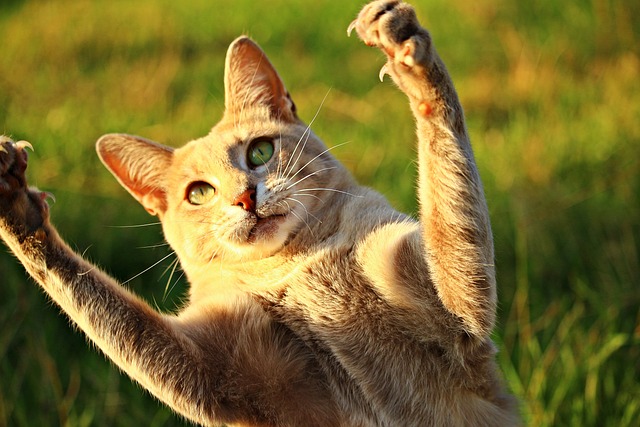Declawing Cats

Animals, just like humans, come with some behaviour traits that we may find undesirable. These, of course, will be different depending on the owner. A cat chasing birds may not bother one owner but be considered horrific by another.
A cat scratching the furniture can be a nuisance. In the case of antique or expensive furniture, it can be costly. There is also a potential risk of a cat scratching a human. Given this, it’s easy to see why some cat owners might come to see declawing as the most practical and logical way to prevent this.
Declawing is a surgical procedure performed under anaesthetic which removes the claws. The most common type of declawing is an onychectomy. It involves removing part of the bones to which the claws are attached, and, therefore, the claws will never grow back; problem solved. We mostly hear of or read about declawing concerning cats.
Cats scratch for various reasons, such as scent marking (they have scent glands in their paw pads) and to keep their claws trim (and not, as some believe, to sharpen their claws). Claws are also part of a cat’s defence system. Declawing prevents the cat from behaving in a normal way. It may also lead to the cat becoming unhappy or stressed. There are, in some cases, medical reasons for declawing, such as to resolve bad nail infections or remove a tumour. However, there are also risks, as there are with any surgical procedure. Some of these are the cat being left in chronic pain, difficulty walking and adverse reactions or complications with the anaesthetic.
Declawing has been banned in the UK since 2006. The punishment for anyone convicted of declawing is a fine of up to £20,000. However, it’s still performed in some countries, such as the USA. In the USA, there is a higher proportion of cats kept entirely indoors than in the UK. The predominance of indoor cats may provide some explanation for why it has not yet been banned there.
Several alternatives to declawing will allow the cat to exhibit its normal behaviour and protect the household furniture and occupants. For example, providing a dedicated scratch post can be an effective compromise, as can deterrent or pheromone sprays. There are also nail covers that lessen the impact of the cat’s scratching. Access to the outdoors may also reduce indoor scratching as they can access trees and other materials.
Declawing is, in my opinion, an extreme method of resolving an issue with other solutions. I feel that it should only ever be done for medical reasons and even then as a last resort. When considering if a cat will fit into your surroundings and lifestyle, I think it’s essential to thoroughly consider just how much a cat scratching the furniture is going to be a problem for you. If it is a significant issue, then I think it would be best to get a pet where scratching is going to be much less of a problem.
The two sources I have used for my information on declawing are:
https://www.pets4homes.co.uk/pet-advice/what-is-declawing-and-why-is-it-illegal-in-the-uk.html
https://www.bbc.co.uk/news/world-us-canada-48528968
The opinions expressed are mine and do not reflect those of the website owners or other users.

Responses